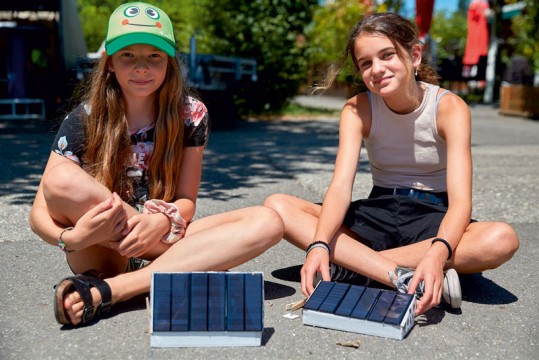 USB solar charger
USB solar charger

With the development of an increasingly connected world and the use of more and more electronic devices, specialists are predicting a sharp rise in global electricity consumption over the coming decades.
At the same time, the fight against global warming is encouraging the switch from combustion engines to electric vehicles, as is the case with cars. An increase in electricity consumption therefore seems highly likely. If these additional needs are met by non-renewable and polluting energies, the environmental challenges won't be resolved. It is therefore necessary to develop renewable sources of electricity production.
This example illustrates the possibility of powering or recharging USB-powered nomadic devices with 100% renewable electricity from the sun.
This should not blind us to the fact that the development of renewable electricity will have to go hand in hand with a reduction in waste, and even with some changes in our lifestyles. So it's always a good idea to think about the real utility of an electronic device before adopting its use, because the cleanest energy is the one we haven't consumed!
Difficulté
Difficile
Durée
2h
Note
4/5
Prix
~ 20 CHF
Témoignages
0
Download the two pages pdf in the plans/sandpaper section. Print them on an A4 page at 100%.Transfer all templates on ...Cut four 9cm pieces and two 15cm pieces of red and blue wires, and strip the ends. Using the soldering iron, add a little ...For each colour, twist the wires together, starting with the two smallest and ending with the largest. Place the reverse side of the photovoltaic cells side by side (all + on one side, all - on the other) and tape them ...Using the soldering machine, put a drop of tin on the + and - connections of each solar cell, then solder the cells to the ...Remove the tape protection, pass the two free wires through the hole in the side, and glue the cells to the cover. Pass the ends of the wires through the two holes in the USB electronics module, observing the correct polarity (red +, ...On the inside of the lid, glue one of the cardboard frames to its slot using white glue. Fix the USB module in the hole in ...
Protection des données
Nous utilisons des cookies pour améliorer l'expérience utilisateur.
Vos données ne seront pas utilisées pour le tracking et ne sont pas partagées avec des tiers.
Accepter
 USB solar charger
USB solar charger



